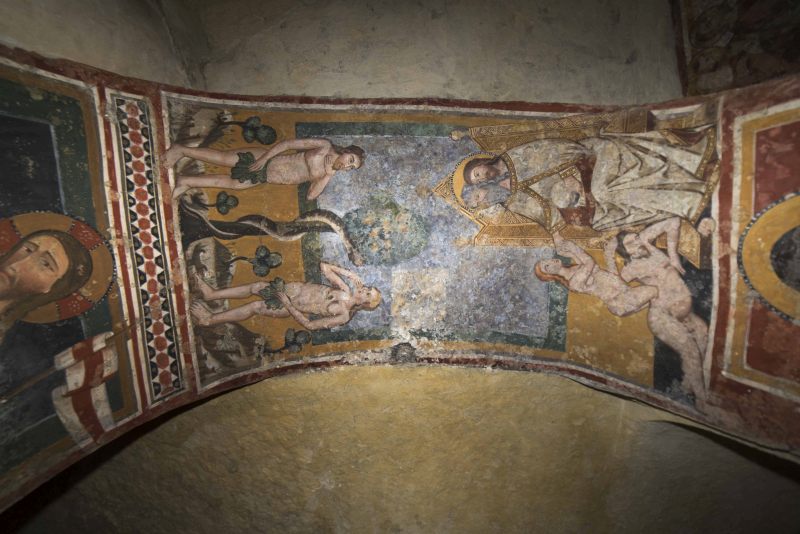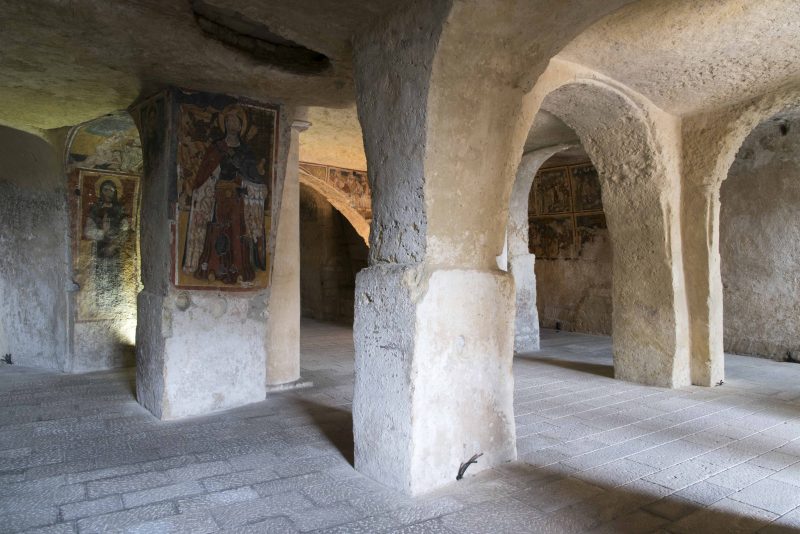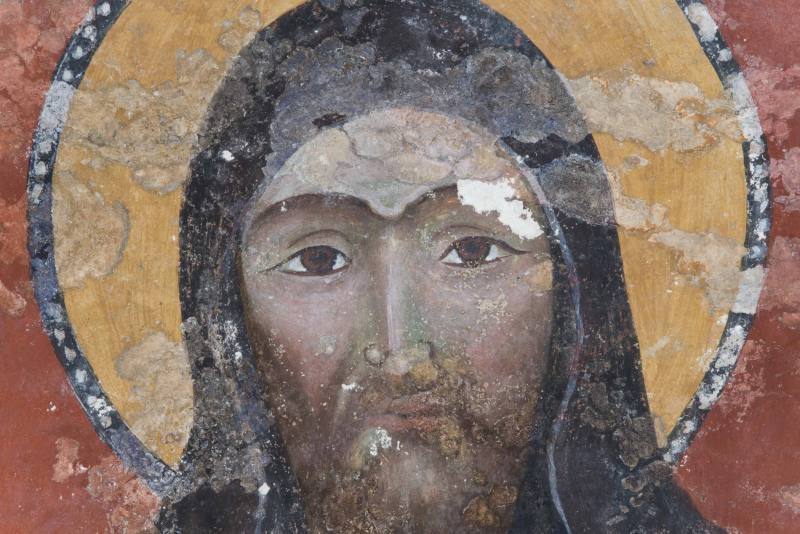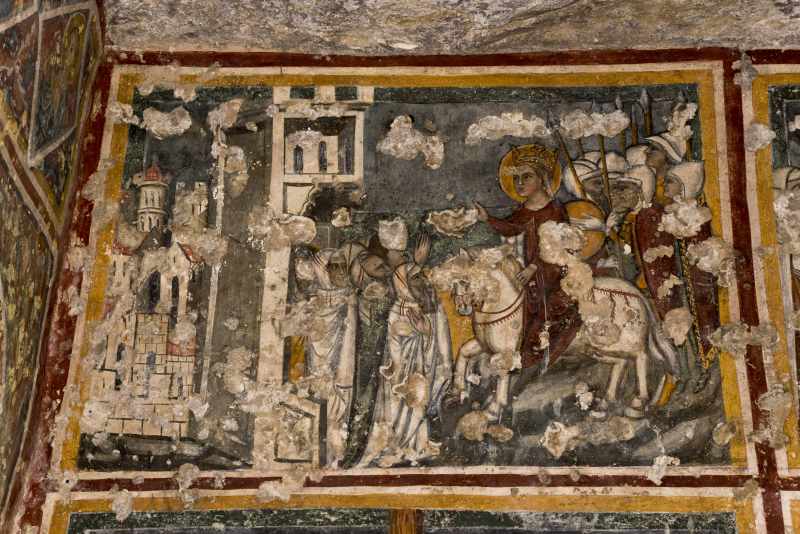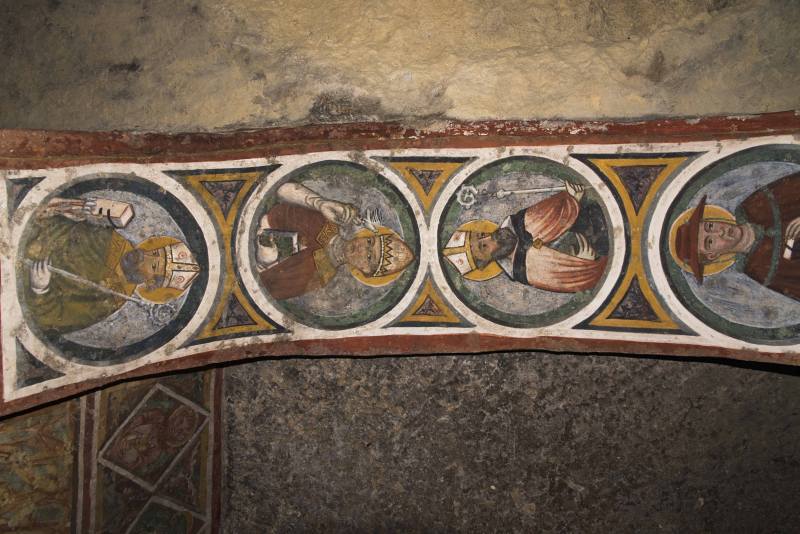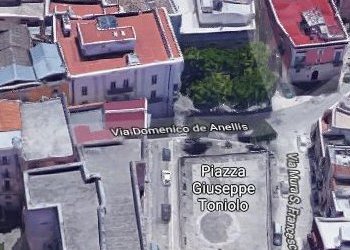CHURCH OF SANTA CROCE
The church of Santa Croce is located in a part of the city called "Lagnoni", characterised by tuffacious stones in which large natural cavities are opened by meteoric water. Karst phenomena have contributed to settlements in caves, typical of the rupestrian civilization, of which Andria preserves several evidences. The present crypt, famous for its important cycle of frescoes, unfortunately not completely preserved, is isolated on its four sides and is far from the modern city. Indeed, in the 19th century the large boulder in which the church had been dug was eroded on the side leaving in the centre just the large block, which was also provided with a forepart made of tufa blocks. Other works were undertaken in this period (addition of the small bell tower, new access, enlargement of the apse, opening of windows) which have partially denaturalized the original aspect of the church and caused the loss of part of the frescoes.
Its earliest phase most likely dates back to the 10th century when the trapezoid shaped basilica was excavated from the tufa rock remodelling already existing natural caves.
No traces of frescoes from this period are preserved. In the 14th - 15th century the church was enlarged with the addition of a presbitery with apse and choir. Most of the painted decoration dates back to this phase. It is characterised by a "popular style", which yet shows a full knowledge of the artistic panorama of that time, as proved by the choice of peculiar iconographic subjects, a cycle of of paintings carried out by more artists over time. So, here is the depiction of scenes of the Inventio Crucis (Legend of the cross), made with vivacious colours, datable from the 14th to the 16th century, it tells the story of Helen, mother of emperor Constantine, who leaves with his entourage for Jerusalem, to find the real Cross. The topic is unusual, there aren't any other evidences of this topic in Puglia. The choise is probably ascribable to the Del Balzo family members, dukes of Andria in this period. They are most likely commissioners of this work as of numerous other works and sacred buildings in Andria.



